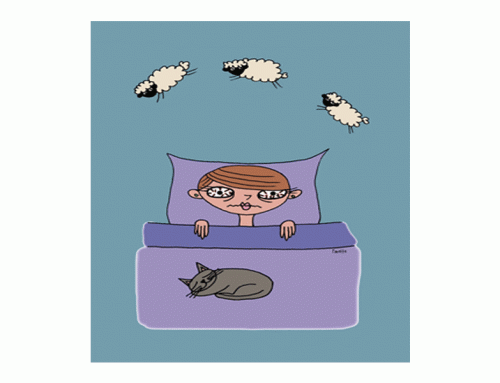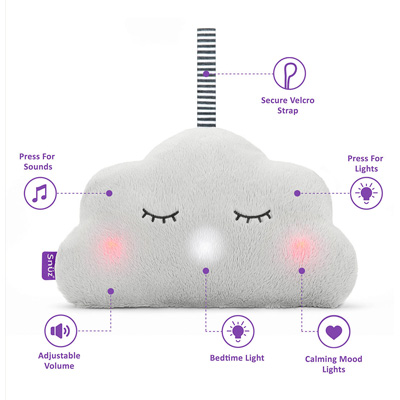 If you are reading this post, it is likely that you are not the kind of person who happily drifts off to sleep within a few minutes every night. Perhaps you are searching for solutions that will give you an easy time falling asleep, or back to sleep, or waking up feeling refreshed. Perhaps you have heard that meditation could be the key.
If you are reading this post, it is likely that you are not the kind of person who happily drifts off to sleep within a few minutes every night. Perhaps you are searching for solutions that will give you an easy time falling asleep, or back to sleep, or waking up feeling refreshed. Perhaps you have heard that meditation could be the key.
There is a certain mystery around meditation. Hopefully after reading this post, you will feel reassured that this ancient practice is actually quite simple, and the challenge is more in the creation and stickability of a new habit.
This brings me to the myth of meditation – that it’s about switching off your mind. Click! The definition of meditation is in fact about focusing on an object. Fact, your mind will wander off, “off you go again”, and the key is to guide your attention back to the object with a gentle amusement, “welcome back”.
Every time you notice that the mind has wandered, (which it will as that is its purpose), you bring your attention back to the object. The object can be your breath, a mantra (eg inhale “sat”, exhale “nam”; these unfamiliar words become associated with a calming response in your nervous system) or a candle flame.
So why does the mind wander in the first place? Human beings are designed to survive; the brain is prepared for danger and as such, our minds filter the constant stimulation throughout our day, searching for anything that we may have experienced before that has threatened us in any way. This mind skill is very useful when you live outside and are protecting yourselves and your young against animals who might find you tasty. However, in the modern world, threats come in the form of stress, competition, financial survival, relationships, FOMO and more. They are omnipresent. As human beings, we need to find a way to calm our nervous systems, so that we can consciously switch from awake alert mode, to rest and digest, especially when our automatic system is struggling to do this by itself. Here is a meditation you can try.
Meditation Before Going To Sleep
- Sit comfortably, quietly, where you won’t be disturbed, and be still
- Bring your attention to your breath moving in and out of your nostrils. Notice how the air you breathe in is cooler than the air you breathe out
- Visualise the journey of the breath moving in through the nose, around your body and then exhaling out of the nose
- Stay with this awareness and when your mind wanders, and you notice (immediately or eventually), gently guide your focus back to the inside of your nose
- Notice the rise and fall of your body as you breathe
- Notice thoughts that arise without engaging with them; let them go like passing clouds across the sky
- Gently snuggle down under your duvet and be proud of yourself for allowing time for meditation
But first of all, I would recommend a ten minute stretch in order to release tension in your major muscle groups, so that you are better able to be still without twitching, or itching. I have found this incredibly helpful. You will soon learn which muscles are prone to tightness in your body and can focus more on those. The release will really help you to sleep.
Stretch and Relax Before Sleep (I like to do this on my bed)
- Take a few minutes to sit and breathe; legs crossed and tall spine. Gently constrict the throat so that you can hear the soft sound of your breath. This is called ujjayi or ocean breath and helps you to focus inwardly
- On all fours; “Cat Cow” spinal rolls

- “Downward Dog” to stretch out the back of the legs and the spine

- “Childs Pose” for self care and to stretch the back

- On your belly; Quad stretch
- On your back; Hamstring stretch – legs up then out to the side. You can use a towel around your foot so as not to overstretch and increase tension
- Cross R leg over L thigh, knee out wide; outer hip stretch. You can feed your hands around your L thigh and draw it in towards you, head on the floor. Take a minute to notice any difference between your sides. Repeat the other side
- Simple spinal twist to aid digestion and release tension in the muscles you use for breathing
- On your back; soles of the feet on the floor, spinal rolls (“bridge”); you can place a block or cushions underneath your sacrum and linger here for a while if you like
- Hug your knees into your chest to massage the lower back.
I hope you find these practices as useful as I have to aid good quality sleep and I wish you luck in creating and sticking to new habits. Enjoy the benefits of a happier, healthier you!
Thank you to Nicky, Yoga & Mindfulness Teacher @loveyogabird for this article.







































